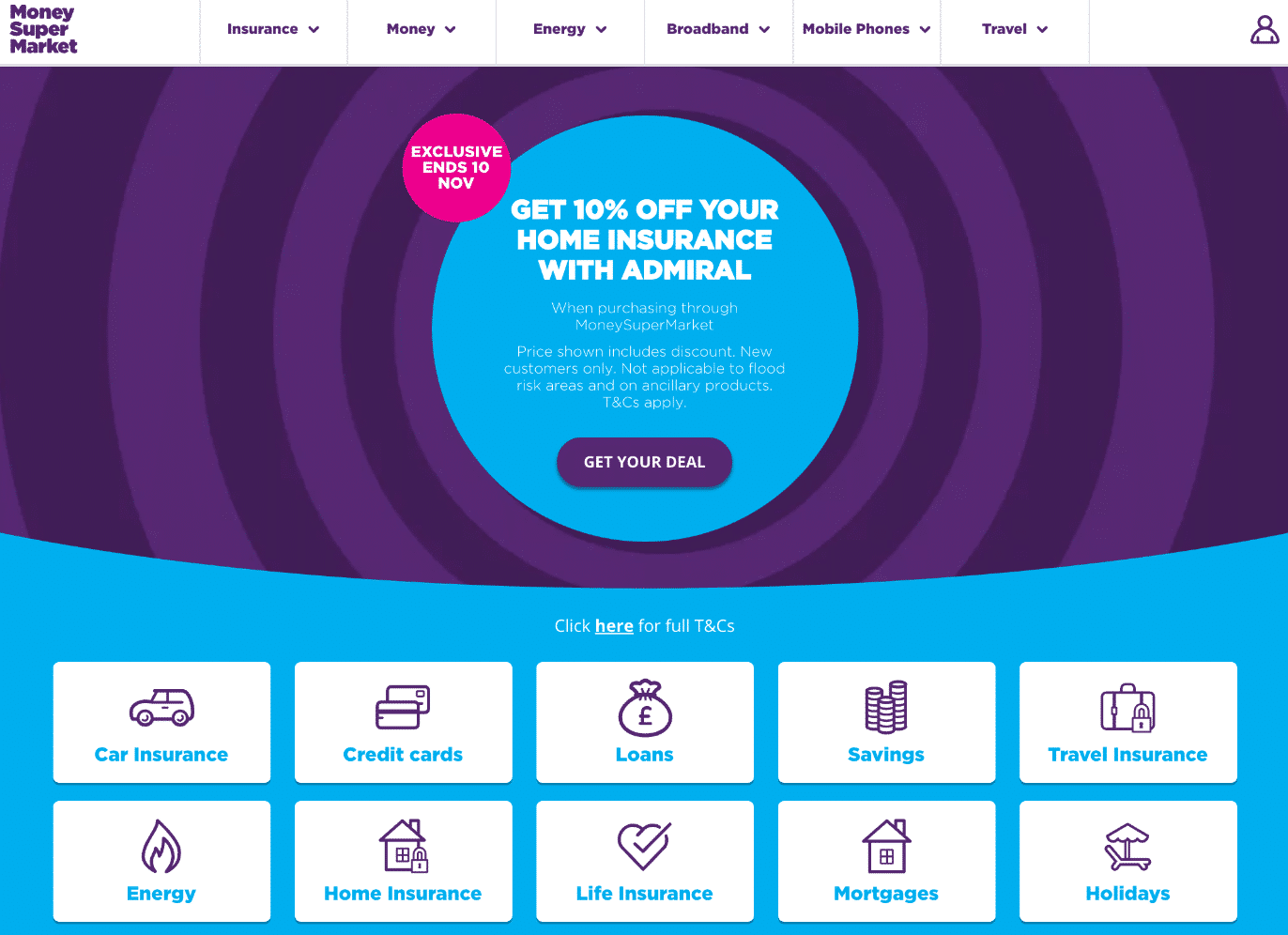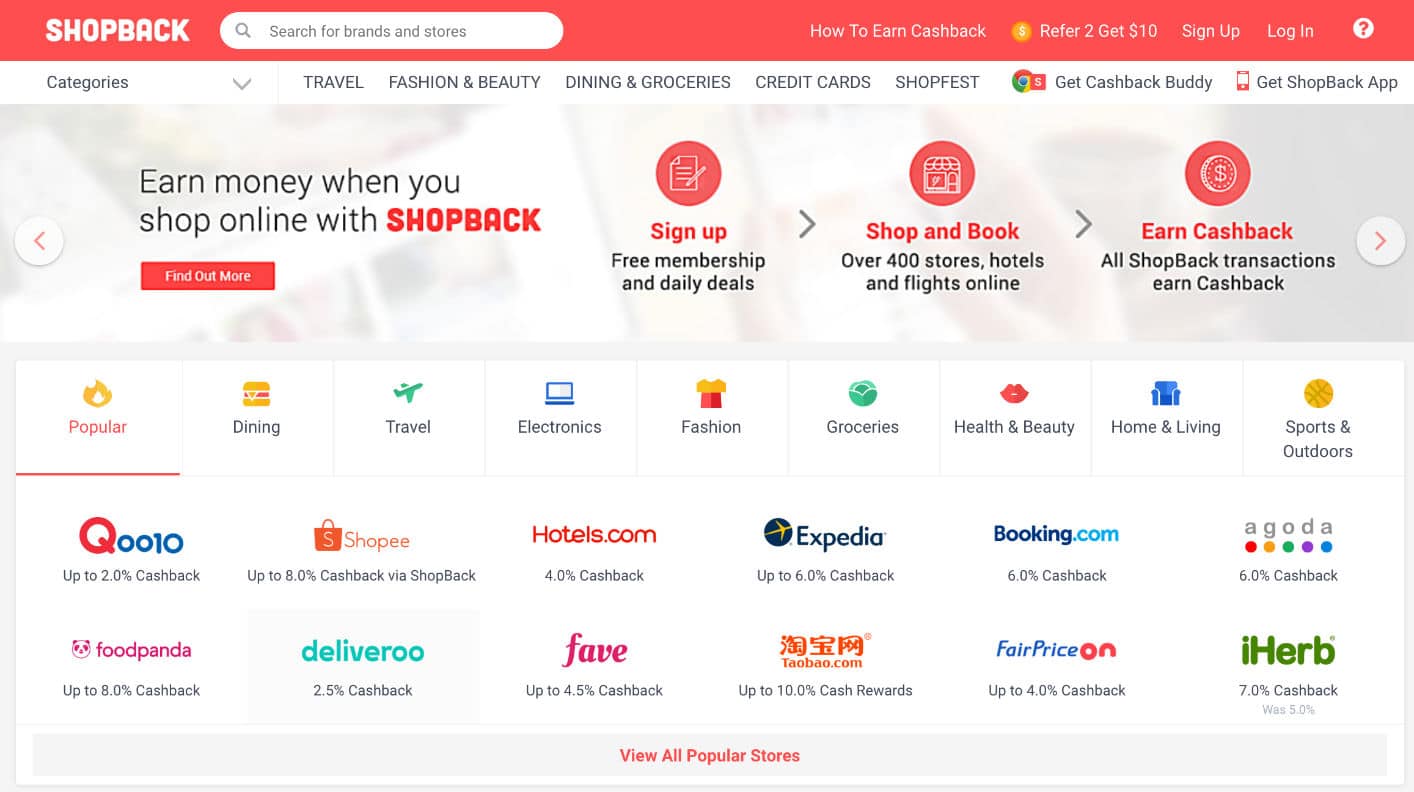If you’re reading this article, then odds are you want to be good at affiliate marketing or at the very least, you’re interested in what affiliate marketing is all about and how to use it.
But here’s the thing… if you want to run a successful affiliate business, you need to understand what it’s about, the different business models, the ones successful at it, and what you can do to be good at it.
So, it’s a good thing that you stumbled on my article because I’m going to share with you all the juicy secrets about affiliate marketing: what’s it about, who the players are, the different types, etc.
And of course, I’ll make sure to share some of the tips and strategies for making your affiliate marketing business a success. So, without further ado, let’s get started!
Breaking Down and Understanding Affiliate Marketing
What is affiliate marketing business?
In a nutshell, it’s where you (the affiliate marketer) promote a product or service that can be tracked via links, codes, phone numbers, etc., that’s unique to you. You then earn a portion of the revenue when a sale happens through your unique link.
But that’s just a surface level look of the model. If you truly want to understand how it works, we need to break it down further.
So, let’s take a look at 4 main components that make up the affiliate business model: the merchant, the network, the publisher, and the consumers.

What Is a Merchant?
Otherwise known as the advertisers, vendors, creators, retailers and so forth, they are the ones who are creating the product/service.
They can be big companies, such as Kinsta, or solo entrepreneurs as well. Basically, if they have a product to sell, then they can be a merchant.
What Is a Publisher?
Typically known as the affiliates, the publishers are the ones that promote, attracts, and convince potential customers on the value of the merchant’s products or services and ultimately land a sale.
A big misconception is that publishers are often individuals or bloggers, but that’s not always the case. Even big companies can be a publisher or an affiliate.
What Is a Consumer?
An important piece of the affiliate marketing puzzle, the consumer or customer is the reason why everything works. Without them, there would be no commissions, no revenue to share, no reason to do this at all.
While they are an important part of the affiliate marketing system, a publisher can decide to share that information or not to their customers. Nowadays, more and more publishers/affiliates are letting consumers know that their marketing is financially incentivized in order to be more transparent. Not to mention the fact that a lot of times you’re required to provide an FTC disclosure.
What Is a Network?
A network is often the platform that acts as an intermediary between an affiliate and the merchant. It’s part of the affiliate marketing equation that tends to get left out, since most affiliates deal with the products/services directly, but is still an important information to know.
Generally, an affiliate network is often used by merchants to manage their affiliate program and also acts as a database for their products. Publishers can then choose the product that they want to promote, depending on their market.

A great example of an affiliate network is Commission Junction, ShareASale, ClickBank, or Amazon. With the Amazon Associates affiliate program, you can choose which item you want to promote on their platform and earn a small commission through your unique link. Check out how to earn an extra $1,000 a month with Amazon affiliate marketing.
Some companies have even created their own networks. Kinsta is a great example, as they are both a merchant, but have also rolled their own affiliate system.
The Different Models of Affiliate Marketing
While the affiliate marketing business will always be comprised of these four parts, how you go about doing it can be done in various models.
Maybe you start a website and put up affiliate links all over it. Maybe you run a weekly podcast to talk about and sell the products or services.
Heck, you can write an eBook or promote and “soft-sell” your affiliate products on social media platforms. There are a ton of ways that you can run your affiliate marketing business.
But, out of all those different models, here are the few that I believe to be effective and works extremely, along with their benefits and challenges.
1. Influencer Model Affiliate Marketing
The Who: Bloggers, YouTubers, podcasters, social media influencers.
Out of all the different types of affiliate marketing, the influencer is a fairly new model that’s quickly becoming a popular approach as more and more consumers preferring recommendations by their peers instead of the traditional advertisements.
How the influencer model works is that an influencer will use a product (often times sent by the merchant), promote the product if they like it, and then make money when their followers make a purchase through their affiliate links.
You’ll often see bloggers, YouTubers, podcasters, and social media influencers using this type of approach for their affiliate marketing business.
And it’s not hard to spot these influencers doing it. Big names such as YouTuber PewDiePie and Twitch streamer Ninja are upfront about their affiliate programs and even smaller content creators/influencers have used them to great effect.
The affiliate program is amazing for twitch streamers who are starting out. Current partners are still getting premium benefits. pic.twitter.com/Vn01SXtEmm
— Ninja (@Ninja) April 21, 2017
The Benefits
Using the influencer model, at a certain point, your followers will grow by themselves. Once you reach a certain level where your content consistently builds up new followers, you’re able to make a lot of money without needing to do much effort.
Merchants love influencers. I mean, they really love them. So much so, you’ll find that a lot of influencers tend to get better commision rate because they are able to deliver a big batch of sales volume in a short period.
Plus, it’s just good brand marketing when a high profile influencer recommends their product.
The Challenges
When it comes to the challenges of using the influencer model, there’s a few that are particularly unique to them.
For starters, as an influencer, you need to consistently cater to your followers. What that means is, if you want to keep your followers and build them up, you’ll need to be able to give the types of information/content that they want.
For example, if you’re a beauty/fashion influencer, you’ll have to keep up with the latest fashion trends if you want to be relatable and give the best fashion tips to your followers.
Being an influencer also puts you at risk of being labeled as a “sell-out” if you happen to promote bad products or services. And in the influencer world, there’s no faster way to lose your followers than being labeled as a “sell-out”.
2. Niche-Focused Model Affiliate Marketing
The Who: Bloggers, website owners, experts in niche markets, techies.
The niche-focused model is the one that a lot of affiliate marketers tend to use. And with good reason. It’s the easiest one to get started with, as all you really need is to build a website or a blog that’s centered around a particular niche market.
With niche-focused models, your content needs to be curated towards a specific group of users with you making money by providing/promoting a solution to them.

My site – Web Hosting Secret Revealed (WHSR) is an example of a niche-focused model as it focuses solely on the hosting market. A lot of the content that’s created on WHSR is tailored towards solving and providing solutions for web hosting related services, which makes it a natural platform for hosting providers with affiliate programs.
Of course, I’m not the only one who’s been successful in this type of model. Plenty of influencers are known to build their websites around niche market. Some of the biggest names that I am sure you have heard of include Pat Flynn (Smart Passive Income), Mark Wiens (Migrationology), Darren Rowse (Problogger), and more.
The Benefits
One of the biggest advantages with niche-focused affiliate marketing? It’s absolutely easy to get started. All you really need is a website and knowing which niche market to tackle.
With website builders and a CMS such as WordPress makes it easy to create a website. You could have a site or a blog up-and-running within a day (or even less!).
Another benefit is that you don’t need to be an expert to be in this field. As long as you’ve good a computer and decent research skills, you can easily build up a blog or a website for any particular niche market.
Bottom line, when it comes to the niche-focused model, there’s a lower barrier of entry which makes it a great choice for those who wants to try out affiliate marketing.
The Challenges
On the flip side, since the barrier of entry is so low, you have to deal with the fact that it is an extremely competitive model. Since the niche-focused model can be quite profitable, it’s already filled with professional affiliate marketers.
If you’re just starting out, it might be hard to compete with those who’ve been in the industry longer than you, especially if you’re still trying to establish a presence and an audience.
Another challenge is the fact that website traffic can be extremely volatile with this model. Traffic is essential for a website and if you don’t have any traffic, then you don’t get any sales.
With search engines and social media networks constantly changing their algorithms, there’s a possibility that you could lose all of your of income and traffic overnight.
Imagine losing all of your audience just because Google decides to change their algorithms, again. 😨
3. Location-Focused Model Affiliate Marketing
The Who: Bloggers, website owners, experts in niche markets, techies.
Location-focused affiliate marketing is a newer model that’s currently making waves in the industry. In essence, it’s similar to the niche-focused model, in that you focus on a specific group of users in a particular niche.
What makes them different is that, rather than just focusing on a particular group of users, you also focus on a specific location as well.
This often includes using the local language with communities that don’t often speak or read the common/English language.

A great example of this is Access Trade in Vietnam, whose CEO I’ve spoken to during this year’s Affiliate Summit APAC in Singapore. He notes that affiliates in Vietnam are currently making huge profits by selling products and services that are catered towards the Vietnamese.
The reason why it’s so profitable is due to smaller/lesser competition (since most sites are written in English) and using the native language makes it easier for them to build a rapport with the local audiences. Check out how to launch a multilingual WordPress site.
The Benefits
Just like the niche-focused model, a location-focused affiliate marketing business is quite easy to get started with.
All you really need to do is just create a website (which is super easy to do with website builders or using WordPress) and just focus on creating content that’s curated towards the local language/community.
Another benefit that the location-focused model has over the others is lesser competition. Being more localized and specific, your website won’t have any direct competition since most sites tend to focus on a global audience.
The Challenges
Given the very targeted nature of this model, you’ll have a very limited market size to work with. By focusing on a specific language or community, you’re only able to market your website and products to one fixed group of people.
And, just like niche-focused models, you have to deal with volatility in website traffic. Again, you could potentially lose significant income and traffic overnight if search engines and social media algorithms change.
4. Mega-Mall Model Affiliate Marketing
The Who: Startups, well-funded affiliates, media companies, etc.
As affiliate marketing continues to grow, you’ll notice a trend of affiliate marketing behemoths cropping up and disrupting the current business landscape and ecosystem.
These “Mega-Mall” model affiliate marketing is increasing in number due to:
- Smaller affiliates evolving into a bigger business.
- The rise of online shopping in developing countries.
- Venture capitalist investing in startups due to the lucrative potential of affiliate marketing.
Given the nature of the mega-mall model, it’s not easy for affiliate marketers to reach this kind of level when they are just starting out.
So, unless you have an angel investor or the backing of venture capitalists, being a mega-mall affiliate marketing business is probably not attainable in the short term.
The Big Players
While it’s not easy to become a mega-mall model affiliate, that doesn’t mean that there haven’t been companies who are successful at it:
MoneySuperMarket
Probably one of the biggest affiliates in the world, MoneySuperMarket has seen numerous success since its launch in the early 2000s. Today, the company has a revenue of over £300 million and its founder, Simon Justin Nixon, is a certified billionaire.

TripAdvisor
Most people don’t realize that TripAdvisor is actually an affiliate and have established affiliate partnership with plenty of travel companies and hotels. This research shows that 77% of their revenue comes from click-based advertising (CPA affiliate) and that TripAdvisor influenced an estimated 10.3% (roughly $546 billion) of global travel spending.

ShopBack
ShopBack is another up-and-coming affiliate startup that’s making waves in Singapore and the rest of Asia. Despite only being around for 4 years (they were founded in 2014), they’ve managed to secure funding of up to $25 million back in November 2017.

Finding the Right Affiliate Marketing Business Model
Now that you know what the different models are, you need to ask yourself a question:
Which model is right for you?
When you want to settle on an affiliate business model, there are a number of factors that you need to consider. Plus, you need to know what your goal/endgame is.
For example, if you’re a beginner or just starting out, you might want to think about which market to focus on, the products you want to promote, how you go about promoting them.
An expert in a niche industry? Then maybe a niche-focused model would be better suited. Location-based might be a better choice if languages are your forte.
If you’re a veteran affiliate, then the questions (and challenges) will be different.
What’s the long-term game plan? How do you intend to fuel growth into your business? Should you scale up or expand to a new market?
For some, the long-term goal might be to switch to a different playing field altogether. Such was the case for ProBlogger’s Darren Rowse.

After gaining success with ProBlogger, Rowse transitioned into organizing big blogger events in Australia. Plus, I’ve known a number of affiliates who sold their websites to larger companies and exiting the business altogether after achieving their initial goals.
With affiliate marketing, what your goals are will determine the heights that you reach in it. That, and it also helps decide the strategies and tactics you need to take and the team you need to build.
Say you’re going for the niche-focused model and want to create compelling content. If you’re not a good writer, then you’ll need to hire some. Building a website from scratch? Find yourself a website developer.
For influencers, you might need to build up a team of virtual assistants to help research on trends or handle fan interaction on other platforms such as social media.
Once you narrow down on your goals and the model, you’ll find a clearer path towards affiliate marketing success.
Your Audience Is Your Lifeblood
One thing you need to remember, regardless of your affiliate business model, is that your traffic will always be the #1 thing that matters.
Why?
Because no traffic = no users = no revenue.
Yes, it’s that simple. If you want to be successful in the affiliate marketing business, you need to be able to generate traffic.
I’m sure you’re familiar with the different ways to gain traffic. But if you’re not, here are the main four you need to focus on:
- SEO
- Social media strategy/campaign
- Advertising
- Word of mouth
While focusing on those four will get you traffic, as an affiliate, you need to think deeper than that. You also need to focus on your audience/users as well.
Here’s the thing, if you want to be successful at affiliate marketing, you need to be more than just a cookie cutter website. (Suggested reading: How Much Is My Website Worth?).
Longevity is the game here and you can only do that if you’re delivering value to your audiences. Otherwise, what’s the point of them coming to your website in the first place?
YouTube viewers keep coming back to a channel because they expect to get quality video content consistently. If the YouTuber stops posting videos or post low quality ones, odds are their viewership is going to dip.
By constantly developing and upgrading their website and mobile app, Shop Back is able to retain repeat traffic by enhancing the overall user experience and giving users their money back through cash back.
People still flock to TripAdvisor, despite all the controversy, because they are still the largest database for reviews on anything to do with traveling, hotels, restaurants, and such.
Figure what value your website can offer and that will be key in capturing your audience, win over big traffic, and ultimately, make your affiliate business a success.
Summary
Affiliate marketing is a thriving industry and will continue to grow bigger for years to come. Choosing the right affiliate business model, understanding the importance of your audience, and plain old hard work is what going to ensure your success as an affiliate.
If you’re really serious about running your successful affiliate marketing business, just remember the following points:
- Understand the different affiliate models and their benefits/challenges
- Choose the one that fits your goals
- Learn from other affiliates and how they do it
- Your audience/traffic will always be the #1 priority
Sure, affiliate marketing might seem lucrative right now, but understand that in order to see results, you’re going to have to put in the effort. Hopefully, with this article, you understand how the affiliate marketing business works, and how you can tackle the market head on!


Thank you for the opportunity to write at Kinsta. More than happy to extend this discussion in the comment section if you got a question or disagree with what’s written.
Hi Jerry,
That was an amazing article with lots of useful information. Affiliate marketing is definitely a thriving industry and it’ll continue to be one.
Thanks for sharing Jerry.
Regards,
Rahul D
Hello Jerry,
I read your post and I like it, but can you please tell me how can we increase the clicks on ads and affiliates links?
Thank
Anil Patel
This is very effective for the new affiliate marketers got to know so much from this… very excellent work keeps growing… God bless you!!!
This article was the jolt I needed, it covered quite a bit of insight. I will use it as a point of reference and read over & over. I have spent close to 3 years building a audience in Vietnam and am ready to pull the trigger… Thanks
Glad that it helps. Looking back at my 15 years journey, understanding your options and choosing the right model is far more important than I first thought in the beginning.
Good luck!
Well written, Jerry :)
Thanks buddy
I was extremely satisfied to discover this site. I needed to thank for this extraordinary read I certainly appreciating every single piece of it and I have you bookmarked to look at new stuff you post.